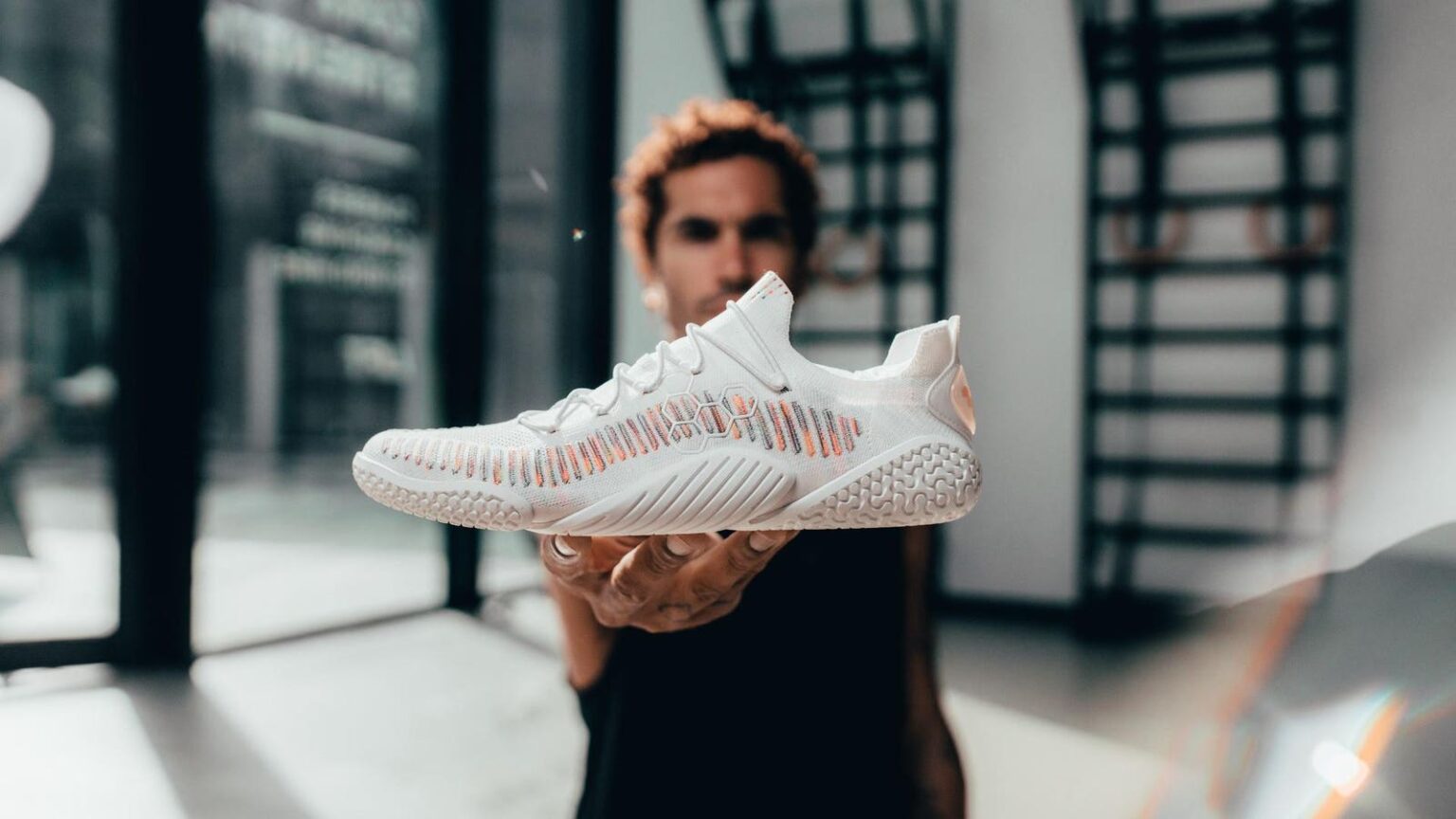UK-based Vivobarefoot launches its latest design, the Motus Flex: the thinnest, most flexible shoe the company has released to date.
Asher Clark, Vivobarefoot’s Chief Design Officer and Co-Founder, says,“The Flex mimics how your feet move, allowing them to function properly by providing minimal interference.”
Rina Harris, a London-based functional podiatrist, says shoes like Vivo’s should be the norm, not the exception. In fact, her own journey to barefoot shoes started with foot pain that led her to the brand’s Covent Garden store.
“I had a bunion forming, and a cyst on top of the bunion, which no one could help me resolve. And on top of that, pain when I ran. So through desperation, I went to the Vivo store in London, got a pair of their shoes, and said, let’s see if they do anything.”
Within six months, her pain reduced, and her feet improved. She became a proponent of barefoot designs. As a podiatrist, she has been trained in orthotics and cushiony soles to ease pain, but Harris argues that that’s not always the best approach.
Studies, she says, are beginning to advocate for barefoot shoes. “More research is coming out now, which is amazing, and every bit of research so far shows that being barefoot or in a barefoot shoe is actually as good as doing strengthening exercises for your feet.”
She continues: “And also when we look at barefoot populations in other countries, we find a lot of the issues that we have in the West, say, for example, plantar fasciitis and bunion deformity, it not as predominant. It almost doesn’t exist.”
Harris has been tracking an on-going study by Sweden-based My Foot Function who looked at the feet of over 100 people in Gothenburg, Sweden and then compared them to more than 1000 people in Sri Lanka.
The study, she explains, revealed a “significant correlation between footwear usage and foot shape deformities, particularly focusing on Hallux Valgus Angles (HVA). Participants who predominantly wore shoes or closed-toe box sandals exhibited higher HVA values compared to those who were predominantly barefoot or wore open-toe sandals. This highlights the influence of footwear on toe alignment and foot health over time.”
Furthermore, your job can dictate what you wear. So individuals who have to wear closed-toe shoes for work are at an a disadvantage, and that can play out over decades of wear. The study noticed that individuals who had jobs that allowed them to wear open-toe shoes, and sandals, and be more free with their feet had fewer foot-related pain and conditions.
And yet, athletic shoes, which are touted for health and exercise, have thick, cushioned soles. How can that be? Harris calls them “maximal shoes.”
“Its like running on cloud nine, or that’s the idea behind them. We have 33 joints on our feet. But our modern surfaces are all flat and hard, which means those 33 joints never actually have the chance to naturally mobilize. So, if you’re in a rigid shoe, that’s even worse. But if you’re in a natural shoe and then go and walk on grass, for example, then you do that mobilization because the foot molds to the ground and gets to mobilize. Remember, our foot is a sensory organ. There are over 200,000 nerve receptors on the soles of the feet. And they’re there for a reason,” Harris says.
For Vivo, this is the company’s mission — to get everyone out of the cushioned shoes and feeling the ground again.
The Motus Flex was inspired by yogis, bodyweight, and natural movement enthusiasts. “We pulled designs from these groups to create a pair of shoes that listened to our body’s natural movements, and it has a sole with more flexibility than any other Vivo shoe,” Clark explains. “The sole itself is our thinnest yet, and has been separated into two parts for maximum flexibility and mobility.”
Aside from focusing on transforming how we think about movement, Vivobarefoot has been striving to be a regenerative business. Part of that involves rethinking shoe materials, manufacturing, supply chains, and waste — all complex stuff for a global brand.
“We’re working towards full circularity across our footwear range, and our materials strategy is focused on two end-of-life solutions: industrial composting and recycling,” says Clark.
The Motus Flex contains recycled materials (like some of their other synthetic styles): it consists of a 100% polyester upper that can be chemically recycled into new footwear uppers without needing any virgin material added to it, he explains.
All of this is a work in progress, though. Clark would like to find recyclable solutions for the elastane in the upper (which look like knitted socks that hug the ankles), the lace, the toggle fastener, and the adhesives used. To make this happen, he adds, “we’re working closely with material innovators and recyclers to develop these solutions for the industry as quickly as possible.”
But it’s a dance, trying to combine performance with regenerative design.
“Creating footwear that is long-lasting and durable, but also thin and flexible, with minimal negative impact on the planet, is something no company has been able to crack yet! We’re challenging conventional norms, which cost more and there is no pattern to follow. It’s a complex process that requires a radically innovative approach to research, development, and design – but it’s one we’re determined to get right,” he iterates.
Read the full article here
















